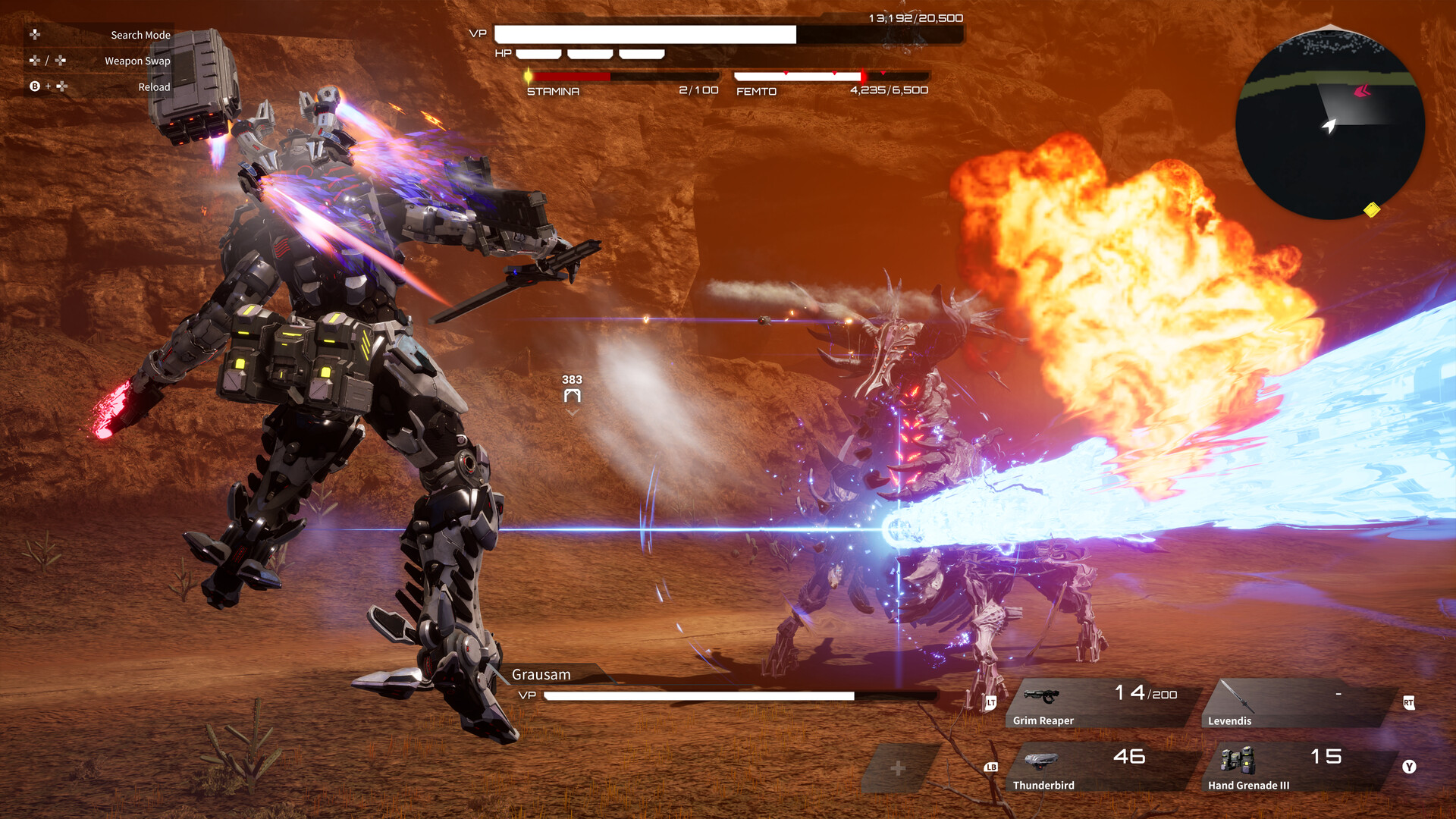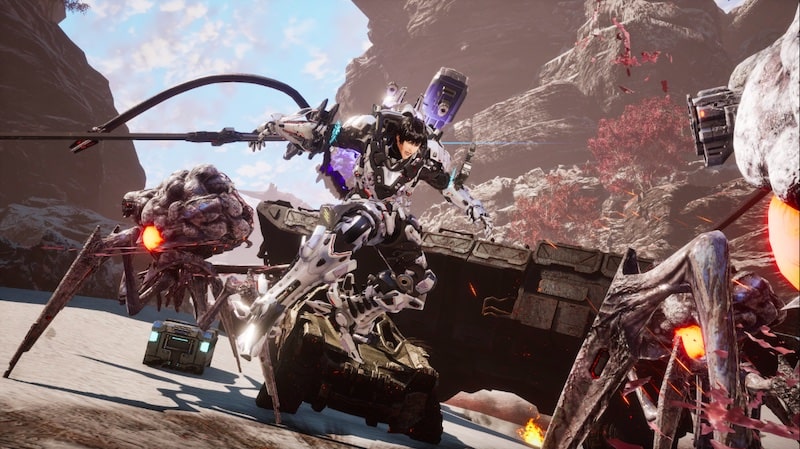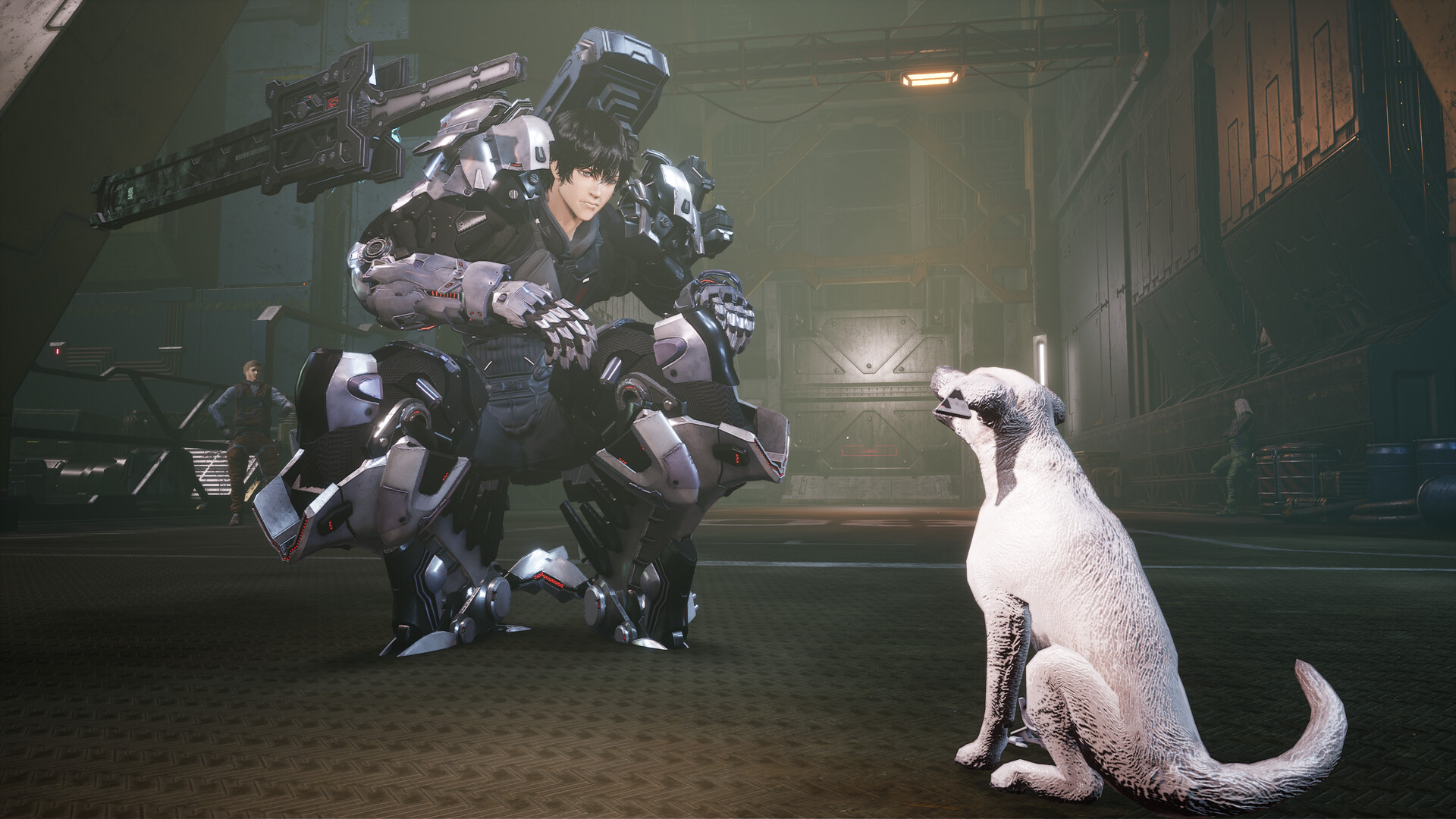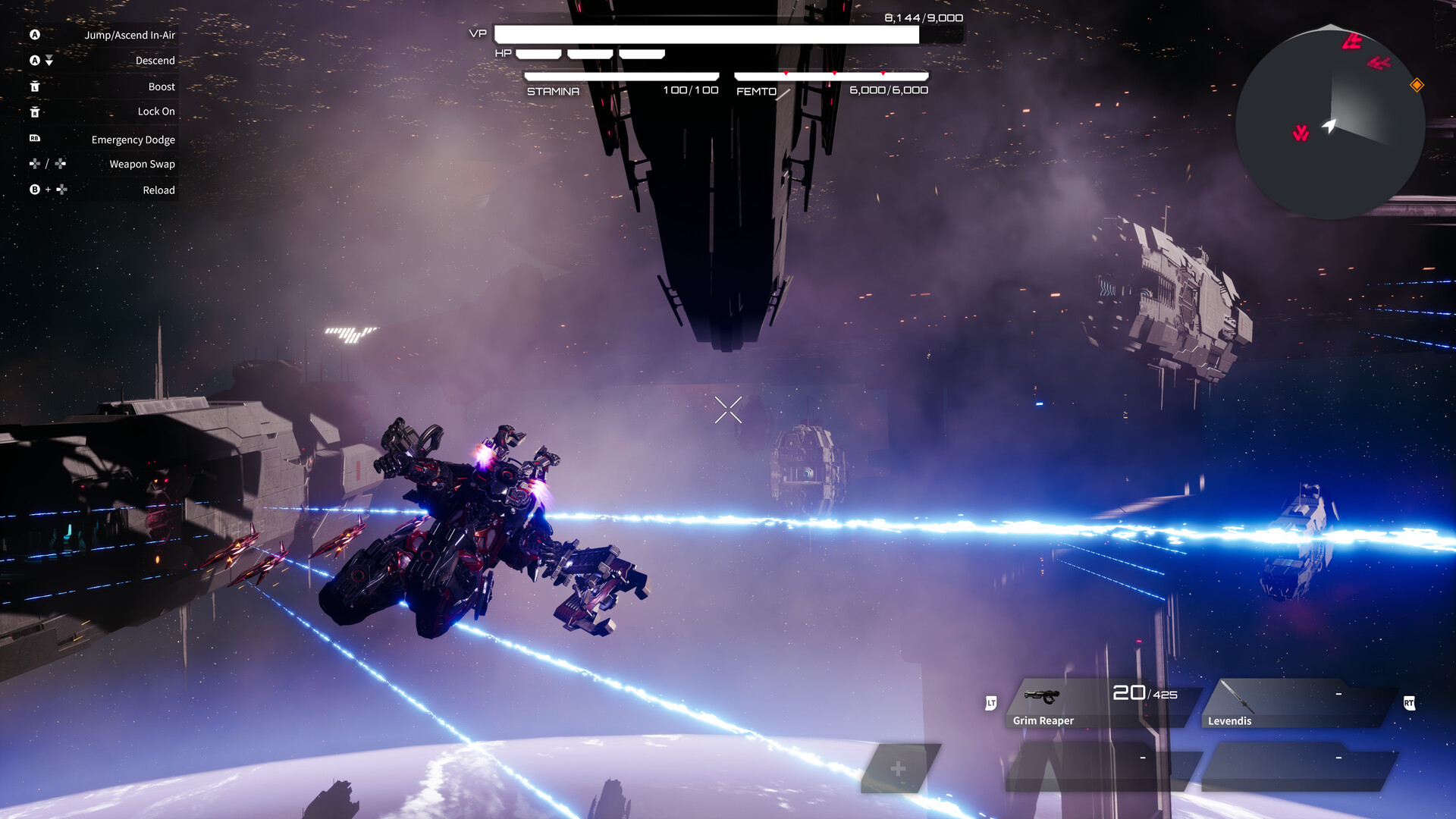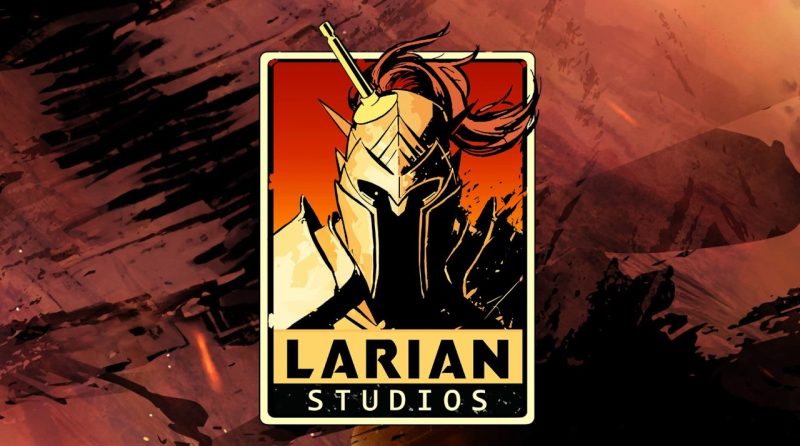Daemon X Machina: Titanic Scion Hands-On Preview And Developer Insights
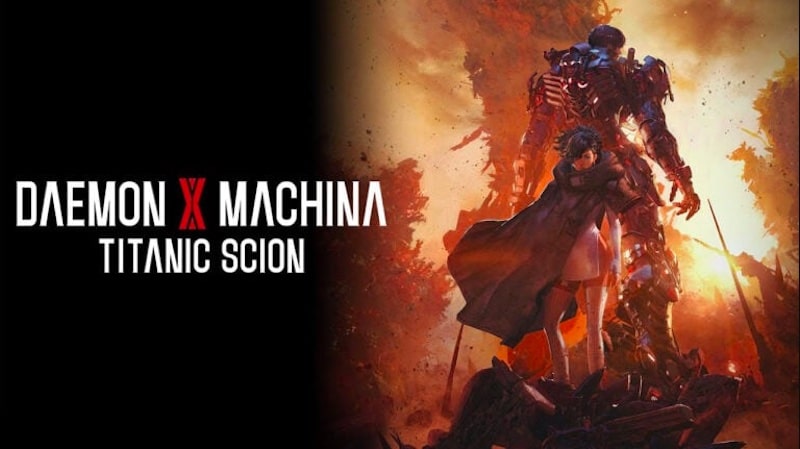
Daemon X Machina: Titanic Scion Hands-On Preview & Developer Insights – At Gamescom, I managed to get my hands on a fairly final build of Daemon X Machina: Titanic Scion, and had the chance to ask the director of the game some questions about the direction for the newest entry in the series. These insights reveal a game that is looking to step out of the shadow of its predecessor and be a solid entry point for new players.
Daemon X Machina: Titanic Scion Hands-On Preview and Developer Insights
My time with the demo was incredibly brief, consisting of an introduction to the customisation options of the game and a brief insight into the structure of the open world. This open world is a marquee feature of this sequel, moving away from a more closed mission structure in favour of exploration and free form combat.
I was immediately reminded of other games in this subgenre, with particular notes of Xenoblade Chronicles X as I took off and started flying around an open area in my mech suit. Excitingly, it appears that flight and aerial combat are a core tenet of the game, and aren’t something that needs to be unlocked over time.
While it’s still perhaps early to comment on the variety of combat scenarios, there was a weight to the movement that took some getting used to, and intricacies that I will surely come to understand once the full game releases. Once I got access to the relevant menus, I chose to basically choose the weapons with the highest damage outputs and see what would happen once I entered the boss arena.
It turns out that higher numbers don’t come without a cost, as I was left swinging an unwieldy club around in the face of a fairly agile target. Not dissimilar to Monster Hunter, it appears that you’ll be wanting to knowingly customise your Arsenal to try and suit the enemy that you’re fighting, rather than strictly going for higher damage.
Still, I beat the boss of the demo in what appeared to be record speed, to the praise of director Kenichiro Tsukuda and the others in the room. Where I was originally struggling and gunning for a fully melee approach to combat (as you might expect with this type of game), it appeared that the game is balanced around you using a mix of ranged and close-quarters combat in order to succeed in higher difficulty moments.
With this out of the way, I dove into talking to Tsukuda-san to learn a bit more about where Titanic Scion was going and what the story was with this sequel.
The Interview
I began my interview by digging into the fundamental differences of what Titanic Scion was setting out to do, and that included a conversation about moving away from the strict mission structure and a reemphasis on multiplayer.
“One of the main differences is that multiplayer mode is available online, so you can do story missions and boss battles with your friends online. And in terms of mechanics, the first title was more mission-based, the second title has an open-field,” commented Tsukuda.
I then decided to ask a bit more about the story of this new entry, and whether or not that would be a focus for the sequel, or if the emphasis would still be on the gameplay. The original Daemon X Machina is famously more weighted towards gameplay over memorable character stories, and so I was excited to hear about what Titanic Scion might be hiding.
“So there are both elements in this game; the mechanics of the game are very important to us.” He then elaborated that their heritage with Marvelous as a publisher has had an impact on their approach to storytelling, saying that their work on Story of Seasons has meant that character will always be something that they aim to include alongside in-depth mechanics, despite the juxtaposition in genre.
With an emphasis on character, I wanted to talk about this game in relation to the first and whether people would be able to jump into this story without knowing the first. Especially for PlayStation players, the first Daemon X Machina game isn’t natively available, and so I wondered the extent to which the first game would have a connection with this one.
Kindly, Tsukuda explained that “The universe has stayed the same, but the story is not necessarily connected because time has passed. It’s been 300 years since the first title, and so new players can definitely enjoy this game. If you’re familiar with the first game, you will understand certain scenes in a different way.”
I also got an exciting insight into the creative process of voice acting in this interview, which was fascinating. Tsukuda-san explained how they used “many of the same actors from the first title.” He then explained that this was done in a homage to Japanese theatres. “In Japan, theatre actors tend to play in the same universe for sequels and other stories.” I did ask if they were able to take advantage of this for the English localisation, and they said that they really wanted to do this, but practicalities meant that this was harder to implement for Western regions than a native Japanese dub.
“We really wanted to,” said Tsukuda.
Moving on from that, I really wanted to dig into the level of growth that we’re seeing in this sequel. The demo offered a glimpse into some pretty granular customisation across the board, and so I wanted to pick Tsukuda’s brain about just how much this has evolved.
“First of all, the number of equipment and the variety of battles have increased. And combining this with skills, you can find a lot of combinations.”
With the open world being a core feature of Titanic Scion, I was curious just how far this open-world would be a place to explore as well as fight enemies. I asked Tsukuda the extent to which players would be encouraged to go off the beaten path and take the scenic route, so to speak.
“Story mode is available online, and there are random dungeons to explore that can give you rare items and extremely strong enemies. You can also collect equipment and ammo from carcasses. In the game world, characters are naturally scared to die, but the idea is that you can help players even after you die. You can provide equipment and ammo. You can still be beneficial to your friends.”
I then asked a big question about the obstacles that come with designing a big open world like this with the ability to fly where you like; I wanted to know if there was a fear that players would opt to avoid ground exploration in favour of just flying over everything.
“We scattered markers to help players find items. My team has experience in developing RPG games, so we created a field and had to adjust it over time, which was a challenge. We tried to combine the ground and sky elements in a balanced way.”
I then asked a bit more about the boss structure of this game and whether we could expect to see more from Titanic Scion in the coming months. While I wasn’t able to necessarily get an idea of a roadmap, I was told about a focus on hiding difficult content in places that players may not expect.
From the sounds of it, word of mouth is going to be a big tool for players this time around to discover some of the tougher challenges outside of the main story, which is interesting considering the extent to which online is being pushed as a core feature.
Daemon X Machina: Titanic Scion releases on September 5th for PlayStation 5.

